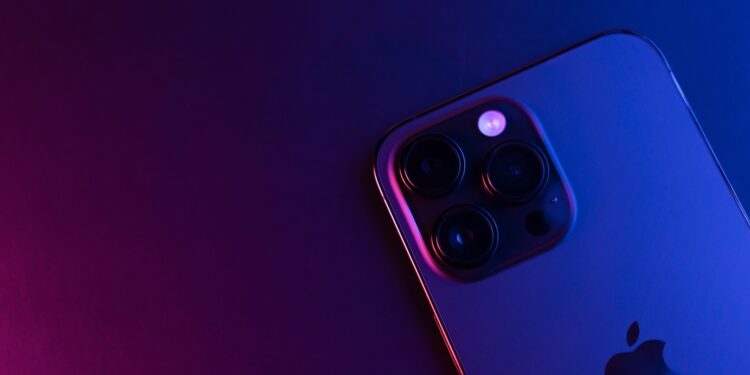In the smartphone world, the camera has long been more than just a nice-to-have. It's one of the most important purchasing criteria – especially for the iPhone. Year after year, Apple continues to deliver software and hardware improvements. Now, a bigger leap could be imminent: Apple has reportedly developed its own image sensor for future iPhones, which could set new standards in image quality.
Current evidence suggests that Apple wants to become more independent when it comes to camera hardware. A new, internally developed image sensor is apparently nearing the testing phase. Initial information comes from a recently published patent and leaker circles on the Chinese platform Weibo. The goal seems clear: higher image quality, more control over the camera technology, and a direct comparison with professional camera systems.
Apple plans camera sensor with extremely high dynamic range
The central theme of the new patent is an image sensor with a stacked pixel architecture that combines a particularly high dynamic range with minimal image noise. Specifically, it describes a structure in which two silicon layers are stacked on top of each other. The upper layer absorbs the light, while the lower layer processes the signals and controls functions such as exposure and noise reduction. According to the patent, this sensor can capture a dynamic range of up to 20 f-stops. This is relatively close to human vision – depending on the lighting conditions, the dynamic range of the human eye is approximately 20 to 30 f-stops.
- For comparison, most current smartphone cameras operate in the range of 10 to 13 f-stops. Even many professional cinema cameras, like the ARRI ALEXA 35, achieve around 17 stops less than Apple's current theoretical limit.
LOFIC ensures better light distribution in the image
A crucial component in the new sensor design is the so-called LOFIC technology – short for Lateral Overflow Integration Capacitor. This allows each pixel of the sensor to capture different amounts of light depending on the brightness of the respective scene. This creates images with very high contrast, but still preserves details in shadows or bright areas. This is especially useful in difficult lighting conditions, such as when photographing a face in front of a bright window. Conventional cameras tend to either show the face too dark or the window overexposed. According to the patent, the new sensor can capture both correctly – in a single image, without any post-processing.
Pixel-level noise reduction
Apple also appears to be taking its own approach to reducing image noise. According to the description, each individual pixel contains its own memory circuit that detects and compensates for electronic noise – directly on the chip. This could bring noticeable benefits, especially in low light, when sensors typically produce more noise. This noise reduction takes place before the image is actually saved. This means less need for software corrections, better image quality straight from the camera, and more consistent results in burst shots or video.
Previous iPhones rely on Sony sensors
Currently, the camera sensors in all iPhone models come from Sony. These also use a two-layer sensor design, as now described in the Apple patent. However, Apple combines the familiar principle with its own technologies such as LOFIC and internal signal processing, which should lead to more compact design and greater efficiency. With its own sensor, Apple would also have more control over the entire image pipeline—from light capture to image output. A step that fits well with Apple's strategy of increasingly developing key hardware components in-house, thus becoming less dependent on suppliers such as Intel, Qualcomm, and Sony.
The sensor is apparently already fully developed
According to a leaker named "Fixed Focus Digital," active on the Weibo platform, this isn't just a theoretical patent application. Apple is said to have already developed the sensor in a functional form. Initial tests are said to be underway in internal development hardware, which suggests imminent integration into future iPhone models. There is currently no concrete timeline or indication as to which iPhone generation the sensor might first be used in. If Apple actually puts this sensor into production, it would be a technical breakthrough for smartphone cameras—and a significant step toward complete in-house development in the field of photography.
Apple relies on its own camera technology in the iPhone
With the new image sensor, Apple aims to make the iPhone camera even more powerful – while simultaneously achieving a more compact design and greater technical independence. The focus is on genuine technical advancements: greater dynamic range, less image noise, and better contrast. The concept is based on an innovative sensor architecture and modern technologies such as LOFIC. If the sensor is actually integrated into future iPhones, it would not only improve image quality but also significantly strengthen Apple's role as a camera developer. Instead of relying on external suppliers, Apple is steering the direction itself – and taking the iPhone's camera technology to a new level. (Image: Shutterstock / Diego Thomazini)
- iPhone display of the future: Apple tests tandem OLED
- Apple focuses on folding devices – a model is still pending
- iPadOS 26 is ready for the upcoming 18.8-inch iPad Fold
- iPhone 17 Air with 2.49 mm battery – Apple focuses on extreme design
- JPMorgan: iPhone Fold launches in 2026 with huge market potential





